Tag: cabinet making training
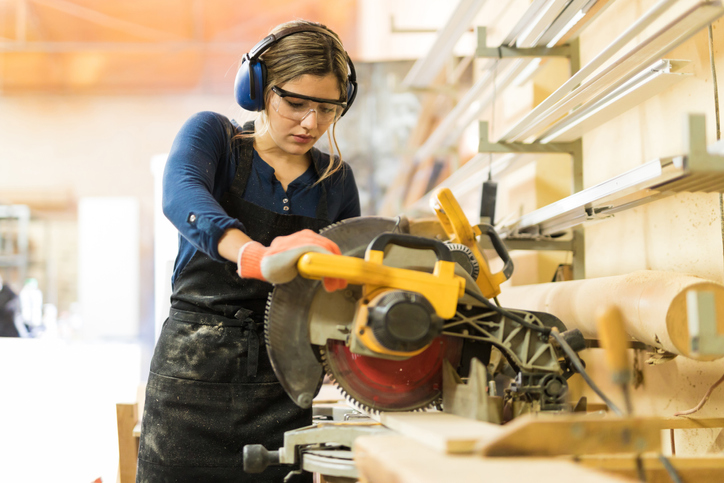
Cabinet making is an art. For a cabinet maker who enjoys working with wood and creating top-notch cabinets, you’ll need the right tools for the job. Pneumatic tools make the top of the list of useful equipment to have in your career. Pneumatic tools are considered cheaper than electric tools. They are more precise and lighter to handle, which is an added bonus when your hands are getting tired from working away at the wood.
At NATS, you’ll get pre-apprenticeship training in cabinet making that’ll provide you with the hands-on skills needed to launch your career. You’ll learn about wood design and layout, identifying and selecting wood, reading blueprints, operating woodworking machines and pneumatic tools and much more. Let’s take a closer look at the pneumatic tools you’ll get to use in your cabinet making career!
1. An Air Compressor Is a Must After Cabinet Making Training
If you want to get the job done well using pneumatic tools, then you’ll definitely need to use an air compressor around the woodshop. It may seem noisy and a bit on the large end at first, but simply put, it’s safer and much cheaper to use when you need controlled power out of your tools. After you complete your cabinet making training, you’ll make use of air compressors to supply power to staple guns or nail guns and manage pneumatic jigs and clamps. You’ll probably encounter common air compressors that make use of a pump known as a positive displacement model, which forces the supply of air into the tank. Some of the smaller compact air compressors only use oil-free pumps, offering you the luxury of minimal maintenance.

2. You Can’t Go Wrong With a Speedy Pneumatic Staple Gun
A pneumatic staple gun is a powerful and essential tool to have by your side after you complete your training at a cabinet making school. Pneumatic staple guns are used to add finishing touches to cabinets that aren’t usually visible to the naked eye. You’ll use this type of staple gun to fasten the backs of cabinets, assemble cabinet door jambs and fasten tongue and groove cabinet boards. The pneumatic staple gun offers speed and accuracy, powered by the air compressor with the use of a trigger and a cartridge. With this kind of air supply, an electric staple gun can’t match a pneumatic staple gun for power when it comes to working with wood in cabinet making.
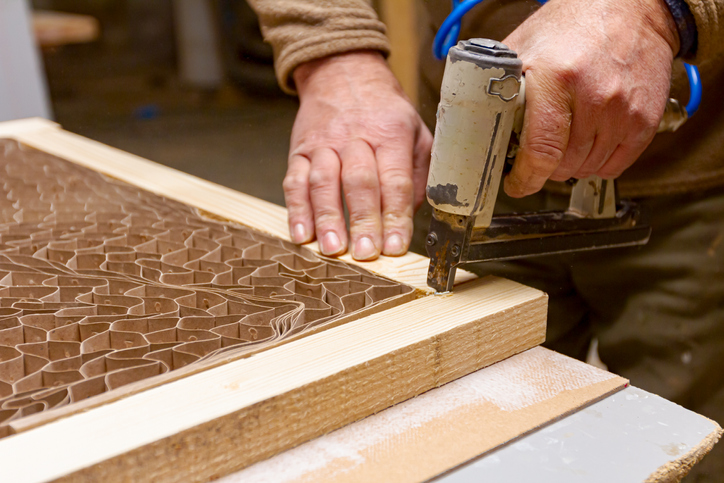
3. Drive Nails With the Pneumatic Finish Nailer
When it comes to driving nails as a cabinet maker, nothing seems easier and faster to use than the pneumatic finish nailer. It provides an instant trigger that shoots the nail straight into the piece of wood. The finish nailer carries 15 to 16-gauge finish nails that offer size and stability for cabinet-making projects. It’s also considered a versatile tool since it can be used with various materials and surfaces. The finish nailer also has a convenient feature that allows you to determine the depth at which you want to insert the nails, without the need for any additional tools.
Are you interested in cabinet making courses?
Contact NATS for more information about our training programs!
Launching a Career in Store Fixture Construction After Cabinet Making Training
March 08, 2022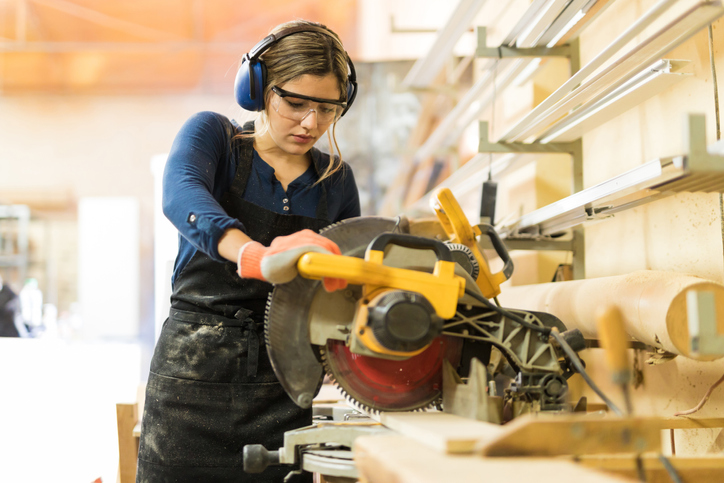
If you like working with your hands and enjoy woodworking, then a career in store fixture construction could be ideal for you. You’ll enjoy designing and installing fixtures for different clientele after you complete your training in cabinet making.
At NATS, we provide you with hands-on training in cabinet making, where you’ll learn about: design and layout, reading blueprints, using power machines and tools, and much more. These skills will make you a marketable candidate as you set out to launch your career. What kinds of careers could you work towards? Fortunately, there are quite a few options for you to look forward to, including a career working on store fixtures. The store fixture field is full of different opportunities to tap into, benefits to enjoy, and trends to stay on top of.
Read on to discover what awaits you in store fixture construction!
About Store Fixture Construction
When you choose to specialize in a field, it’s important to know what it’s about. Store fixture construction is the bread and butter of retail stores. The way that store fixtures are designed, made, and displayed bring out the functionality that stores need to show off their merchandise. Cabinet making training will allow you to design and install hardware according to customer specs and according to your recommendations. As a result, stores will rely on your expertise and skills to design functional customized fixtures that can display and hold specific products and items.
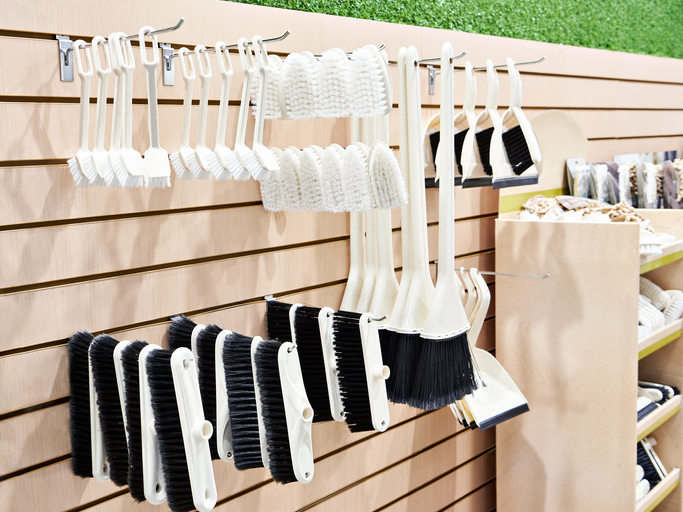
Experience Variety While Working in Store Fixture Construction
When you choose to specialize in the store fixture construction field, you’ll probably get the chance to work on several projects with different retailers. This will give you the chance to showcase your skills after your cabinet making courses. This career path will also provide you with variety, as you design and install different customized store fixtures for the different retailers that require your services. You’ll also have the opportunity to travel from time to time to different locations and stores across your city or even further afield. With a driver’s license, you can treat your work as a road trip as you drive from one retail store to the next, as you discuss with store owners and managers what fixtures you’ll create to fit their needs.
Check Out Store Fixture Construction Trends After Cabinet Making Training
Retailers are always trying to innovate and come up with new ways to make their store stand out. They want to make sure that they attract customers with fresh, eye-catching designs, and that means that they’re very interested in staying up to date on the latest trends affecting store fixtures. As a result, your career in store fixture construction will let you experience new trends as they make their way into the industry. Some retailers, for example, might be trying to move towards a sophisticated minimalist display of their merchandise using plenty of curves and angles. Minimalism is a big trend right now—especially in retail! However, as time goes on, you’re bound to encounter many other trends as they sweep through store shelves.
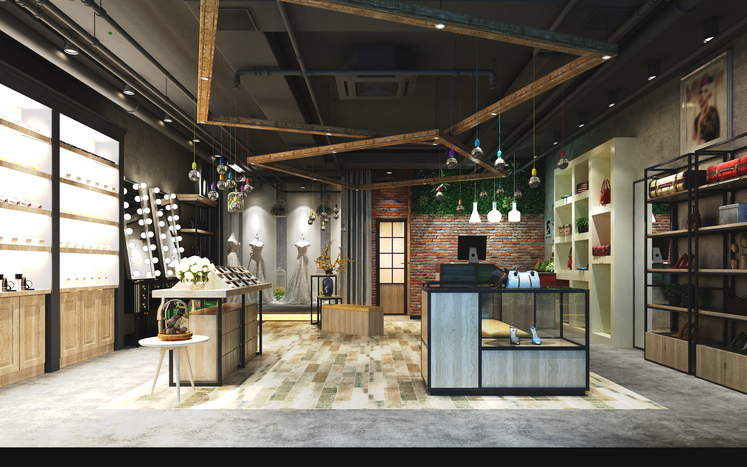
Minimalism is a big trend you might encounter if you work on store fixtures
Are you interested in cabinet making school?
Contact NATS for more information about our training programs!
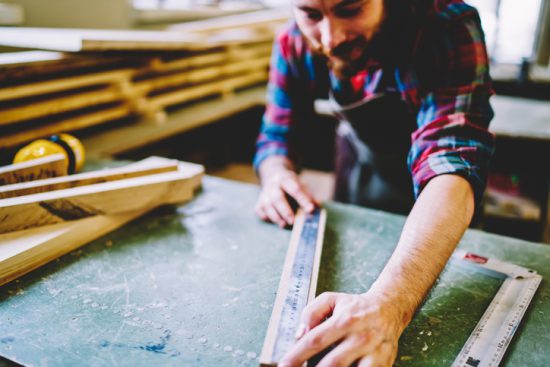
If you’ve always loved the satisfaction of putting something together with your own two hands–with a keen eye for detail–you’ll probably be a great fit for a cabinetmaking career. Cabinetmakers select wood, create and interpret drawings and operate various woodworking machinery in order to construct cabinetry of all sizes and functions. In the process of finalizing cabinet construction, cabinetmakers will typically conduct the process of lamination.
Lamination, the process of making a material more durable by using glue and heat to bind it with another surface, is important in preserving cabinets from deterioration or general wear and tear. As a cabinetmaker, you’ll implement the process of wood lamination to ensure that the cabinets you build can be used for years to come. Below, discover everything you need to know about wood lamination.
Beginning the Lamination Process After Cabinet Making School
Once you’ve completed your cabinetmaking training, you’ll be utilizing the lamination process to finish off each piece of cabinetry. However, before beginning, it’s important to correctly prepare the cabinets for lamination, as failure to do so could result in a scratched or incomplete lamination job.
Before laminating, you’ll want to sand each cabinet completely–ensuring that there are no scratches or dents on the wood. If there are scratches, consider filling them with putty in order to create a smooth, workable surface. Next, you’ll want to gather your supplies. Your main supplies will consist of veneer (thin sheets of melamine or wood) and glue. Make sure you also have on hand a roller, contact cement, an adjustable router and some eye protection. Once you find a well-ventilated area to work in, you’re ready to get started.
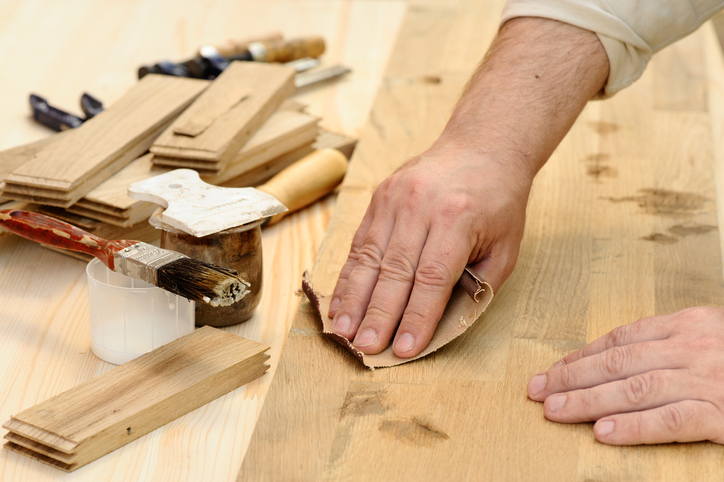
Applying Laminate to Cabinets
Once you’re ready to laminate, you can cut the veneer to fit the cabinet you’re working with. In order to be safe, cut it down to about a centimetre larger than your surface, as this gives you room to clean up everything when the process is complete. Next, you can remove any dust or debris from your laminate, and open your glue. Working in long strokes with your roller tool, apply the glue to both the bottom of the veneer and the top of the cabinet surface. Once each surface is thoroughly coated, you can place the veneer onto the cabinet. However, it’s important to make sure that the centimetre you’ve originally left is hanging off the edges.
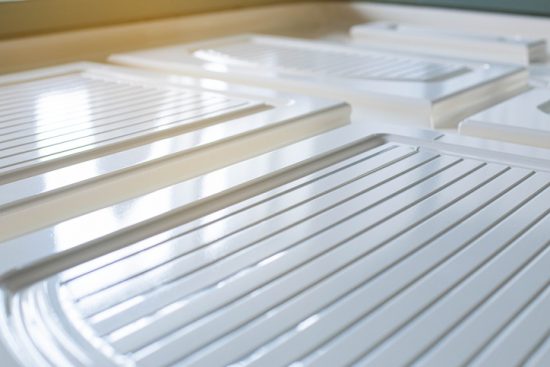
Finishing Up the Lamination Job
As a graduate of cabinet making school, knowing how to properly complete the lamination process is pivotal in ensuring a neatly finished product. Once your veneer is attached to the cabinet surface, use the pressure roller to obtain a durable attachment between the two surfaces. Next, route the edges, maintaining a consistent distance between the router and the edge to keep a consistent appearance. During this step, use goggles to protect your eyes. Once you’ve routed the edges, the lamination process is complete! After letting the lamination sit, you can attach the protected cabinet fixtures to their designated location.
Are you ready to enrol in cabinet making courses?
Become an expert at this craft with a program at the North American Trade Schools.
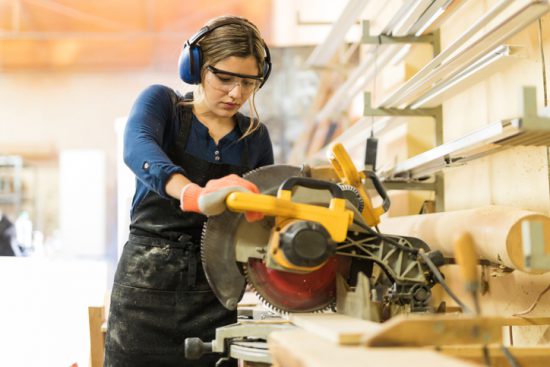
If you love expressing yourself artistically through woodworking, a career in cabinetry could be right for you. Cabinet making is a craft that’s been around for centuries, and building the skills necessary to master this art is no simple task. Cabinet makers specialize in the hands-on process of working with wood to create unique and durable pieces of furniture, including: shelving, cabinets, tables, and more. These professionals are experts in selecting the right materials, tools and finishes to turn a design into a usable product. In order to do so successfully, they typically have a few important qualities. If you’re interested in cabinet making training, keep reading to discover more on these qualities!
1. Professionals with Cabinet Making Training Are Attentive to Detail
Cabinetry is all about precision, from the angle at which the wood is cut to applying the finishing touches to a unique design. Professionals with cabinet making training know how to keep track of each detail of their project–ensuring that upon completion, each different element will seamlessly fit together to create a durable, usable structure. Great cabinetry is all about high quality, and the quality of your products will be enhanced when you’re able to pay attention to even the smallest of details.
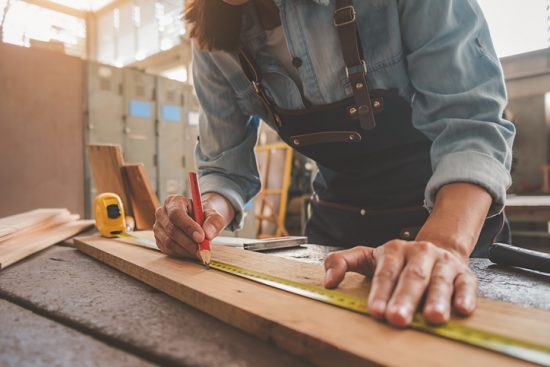
2. Good Time Management Skills
Have you always been good at managing your time well? This is a great skill to have if you’re interested in a career in cabinet making. Cabinet makers often work on many different projects at a time, some involving time constraints around their completion. In order to succeed in the cabinetry business, it’s important to be able to organize your time in a realistic and productive manner–ensuring that you’re setting aside enough time to complete each project.
3. Solid Knowledge of Cabinetry Tools
Behind every successful cabinet maker is a strong working knowledge of the tools and equipment used to create quality products. During cabinet making school, you’ll gain experience using carpentry tools such as table saws, drill presses, planers, joiners, band saws, shapers, and more. You’ll also become comfortable with different power tools that will improve your efficiency.

4. Successful Cabinet Makers Are Adaptable
Throughout your career in cabinet making, you’re likely to work with a number of different clients–each with their own ideas and vision for the style and function of the furniture they’d like to commission. In order to ensure the satisfaction of your clients, it’s important to remain adaptable and open to feedback and new ideas. If you’re able to successfully accommodate your clients’ requests, you’ll be more likely to succeed in building a loyal customer base.
5. A Strong Work Ethic
It’s no secret that success in the cabinetry industry takes a strong work ethic. Cabinet makers work hard to turn a project from a drawing to a functional piece of furniture. When it comes to this artisan craft, there are rarely opportunities to cut corners–as clients are expecting a high-quality product. If you’re a dedicated worker who’s passionate about what they do, then you’ll be likely to succeed as a cabinet maker.
Thinking of enrolling in cabinet making courses?
Launch an exciting future with a program at the North American Trade Schools!
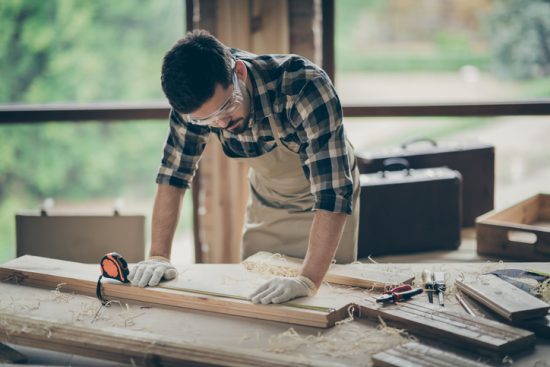
If you’re passionate about working with your hands and turning your love of the woodworking craft into a career, you might want to consider becoming a cabinet maker. Through a cabinet making program, you’ll learn how to select the right type of wood, design and plan the layout of cabinets, read blueprints, utilize woodworking machines, and perform different procedures and techniques relevant to cabinetry.
Once you launch your career, you’ll use the skills you’ve built in order to create custom cabinetry for the clients you work with. While the possibilities for creating custom cabinetry are endless, there are a few basic building principles which will be helpful to follow. Below, discover an introductory guide to the art of custom cabinetry.
After Cabinet Making School, Start by Making a Plan for Your Cabinets
The first step of custom cabinetry is the planning and design process. In this stage, you’ll want to pick the wood you want to use for the cabinets–a decision which may be based on a client’s request. Next, you’ll want to conduct a thorough inspection of the area where you’ll be installing the cabinets, measuring the space where the cabinets will go in order to obtain the right dimensions for your design. With your dimensions in hand, you can move on to designing the type of cabinets you want to create–using blueprints to plan out your designs. As a professional with cabinet making training, planning out the dimensions, materials and specifications of your cabinets before beginning the building process will help you to avoid mistakes and work more efficiently.
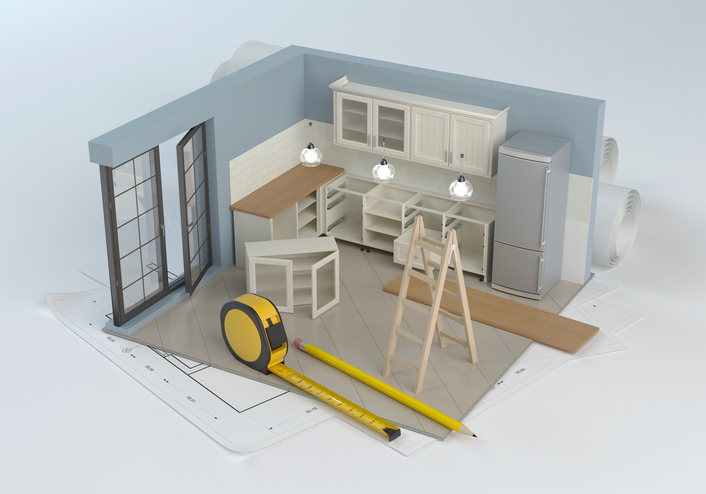
Building Cabinet Frames
After planning your custom cabinet design, you can move on to building the cabinet frames–including the side and front frame. With your side frames cut to the right dimensions, you can use a table saw to cut a “dado” A dado is a groove which enables one piece of wood to connect to another and into the sides of the cabinet. Then, you can put the sides together using both a finish nailer and wood glue to secure them to each other. Here, it’s helpful to use a framing square–a device that lets you know whether the cabinet sides have been placed together squarely. Next, you can build the front–or face frame–of the cabinet. Typically, you’ll want to save your selected wood material for this piece, using plywood for the hidden sides of the cabinet. Once the face frame has been cut, you can drill holes in it, attaching it to the rest of the frame with pocket screws and wood glue.
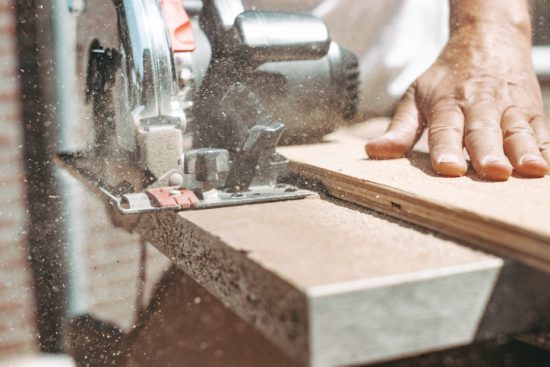
Putting on the Finishing Touches
While attending cabinet making school, it’s important to note that no custom cabinet making process is complete without putting in some finishing touches before installing the cabinets. First, you’ll want to refine the appearance of the cabinets you’ve built by performing some light sanding on the surface of the cabinets. Next, you’ll want to stain or paint the surface area of the cabinets in order to obtain the right appearance. Lastly, when it comes to installation, you can use carefully selected hinges to attach cabinet doors, and use drawer tracks and rails in order to install cabinet drawers. Once everything is working properly, your custom cabinet installation is complete!
Are you ready to begin cabinet making courses?
Get started with a program at the North American Trade Schools!
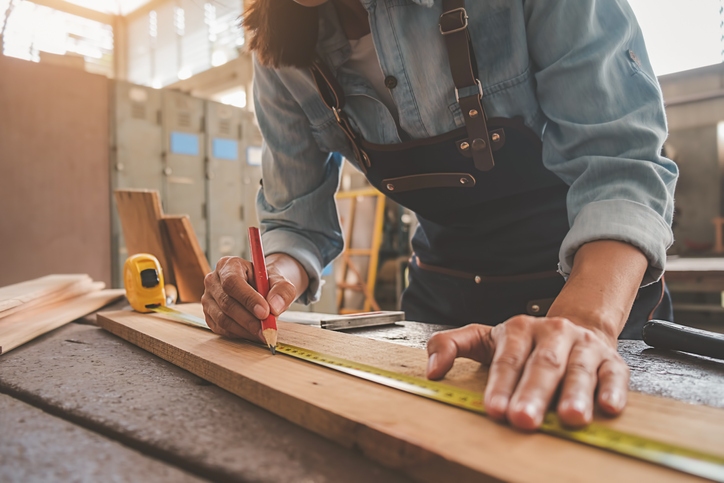
Cabinetmaking is an age-old skill within the woodworking tradition. Nowadays, skilled workers are applying cutting-edge tools and technology to push the trade into the modern landscape.
Graduates of cabinetmaking school open the doors to practical career opportunities in cabinet installation, store fixtures construction, and architectural millwork. In order to secure their footing in the field, graduates should know how to transform their knowledge and training into marketable skills. Employers want to feel confident that their workers have the experience and skillset to complete jobs to a high standard.
Here’s a closer look at how graduates can craft an impressive resume to land work in cabinetry!
Showcase Your Practical Experience
First and foremost, cabinetmaking is a hands-on trade. Skilled workers will need to know the fundamentals of shaping, cutting, and assembling different types of wood into a finished product. For that reason, employers are looking for someone who not only understands the theory of cabinetry, but who has practical experience working with the different materials and tools of the trade.
Cabinetmaking training combines classroom teaching with hands-on training in a lab. Students will work with industry-grade equipment–including a table saw, miter saw, drill press, joiner, edge banding machine, and power tools. When applying for a job in cabinetry, students should include examples of their practical experiences and specify how they have used different tools to complete their work. Employers may be scanning resumes for keywords, so it’s important to use industry terminology in your applications.
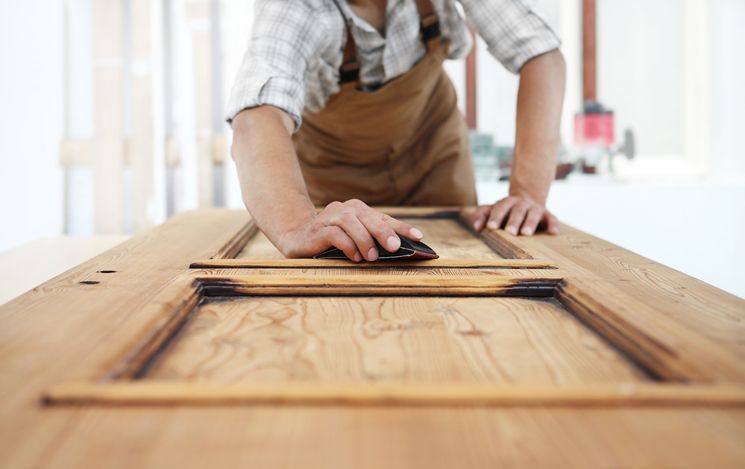
Highlight Employable Skills
Cabinetry is a dynamic profession for individuals with a range of theoretical and practical skills. Employers will be looking for workers with strength in design, construction, and organization. Students enrolled in cabinetmaking school will also learn the importance of soft skills. Time management and the ability to multi-task within tight deadlines are developed throughout the course. The ability to organize your work independently will demonstrate that you are a responsible and reliable worker.
As cabinetry entails physically demanding work, stamina and strength are valuable traits. Employers want to know that you are capable of performing various tasks in an efficient manner. Additionally, creativity and design skills are essential to crafting cabinets that are both functional and aesthetically pleasing. The key skills on your resume will not only showcase your personal strengths, but also demonstrate your understanding of what it takes to work in cabinetry.
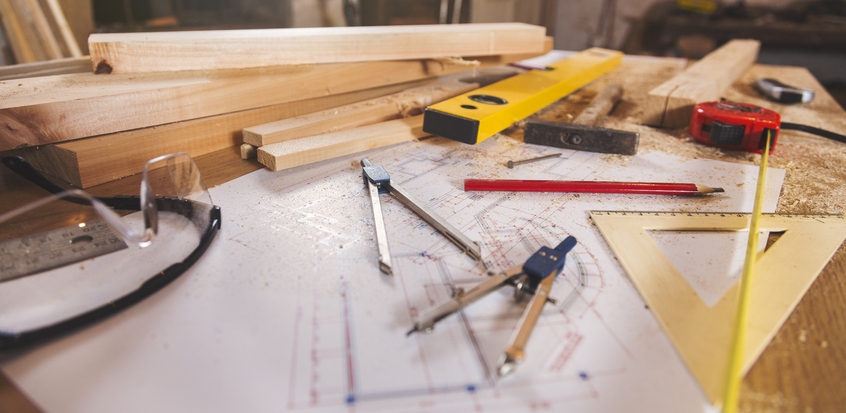
Include an Official Degree From Cabinet Making School
Employers today are looking for candidates with an in-depth working knowledge of the trade. Training someone from scratch takes time and resources, and many companies are looking to hire someone with a pre-acquired skill set.
A degree from a trade school gives candidates a significant advantage in the job market. Students of a cabinetmaking program will learn the fundamentals of woodworking, blueprint reading, operating machines, surfacing techniques, and laminating procedures. They also gain practical experience using industry equipment. Upon graduating, students can immediately apply their training to a job in cabinetry. With a recognized degree from a trade school, employers can rest assured that their workers have the skills to jump straight into professional work.
Are you ready to enroll in cabinet making courses?
Contact NATS today!
In Cabinet Making School? Here are the Best Types of Wood for Kitchen Cabinets
May 11, 2021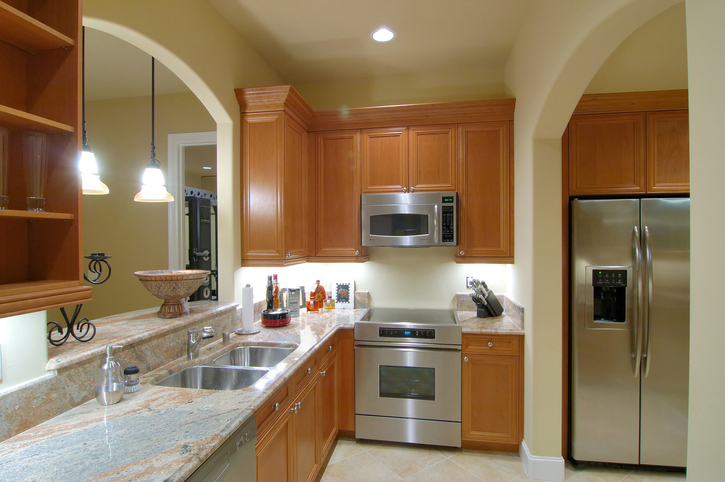
Cabinets are an essential and practical feature of any kitchen space. They require a great deal of craftsmanship in order to perfect their structure and design. Cabinetmaking draws upon hundreds of years of woodworking. The job of professionals today is to apply those traditions of the trade with modern tools and technology.
If you’re interested in pursuing a career in cabinetry, you’ll need to have a good understanding of the types of wood most commonly used in the trade and their practical applications. A good cabinet making school will provide hands-on training in woodworking, teaching you how to identify, select, and shape different kinds of wood.
Here is an overview of the best types of wood to use for crafting kitchen cabinets.
Oak is an Option Those in Cabinet Making School Should Know About
Oak is one of the most popular choices for kitchen cabinets, thanks to its classic beauty and durability. If you’re looking for cabinets that will stand the test of time, oak is a great choice. It is an extremely hard and sturdy wood that comes in a variety of shades–from light to dark brown. Students in cabinet making school will find that oak responds well to both hand and machine tools that are used to cut and shape the wood.
When it comes to the aesthetic of kitchen cabinets, oak tends to be associated with older, traditional models. But woodworkers today are applying new finishes to revitalize its use and create more contemporary designs. Although oak is traditionally stained, advancements in wood paint technology are putting an updated spin on the classic grain surface.
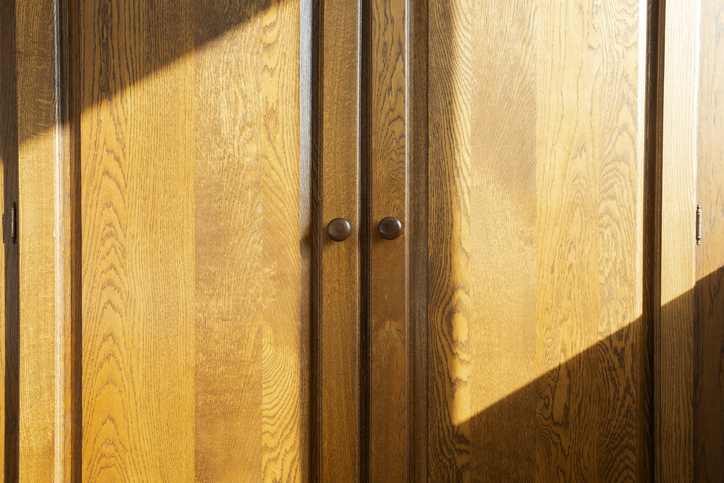
Use Maple for Versatility in Design
Maple is another hard wood option, and one of the most versatile in its uses. Much like oak, Maple is readily available and relatively easy to work with–making it a convenient material for cabinetry. With a smooth finish, this wood comes in colours ranging from almost white to cream. Thanks to its fine grain, you can paint, stain, or varnish this wood with high-quality results. Maple is a great choice for those interested in creating a cohesive aesthetic in the kitchen. The colour and texture of this wood allows you to create traditional, contemporary, or modern cabinetry style. They also vary the door form and finish to match the surrounding design elements.
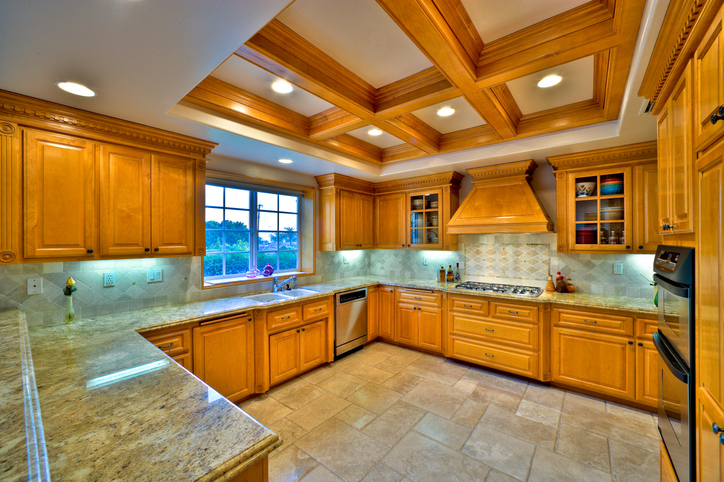
The Timeless Look of Cherry
If you’re dealing in high-end woodworking projects, you’ll appreciate the timeless, classic look of cherry. On the more expensive side, this wood has a rich grain and vibrant colour, which ages over time to a reddish brown once a stain is applied. Cherry is fairly strong and its dark color reduces the visibility of nicks and scratches, making it a solid choice for practical use in kitchen cabinets. Professionals with cabinet making training will appreciate the relative ease of crafting this wood, as it glues well and takes screws and nails easily.
Find Colour Variety in Walnut
Walnut is a hard wood that offers a great deal of variation in terms of grain and colour–ranging from creamy white to dark brown. Although walnut is less readily available than most woods, it is still relatively straightforward to work with, and only needs a light finish to highlight its beautiful natural colour variations. If you choose, a darker finish will create a more classic look. With its colour range, Walnut is a popular choice for kitchen cabinets, and allows for different styles from traditional, to transitional, to contemporary.
Are you interested in cabinet making courses?
Contact NATS today to learn more about our practical program!
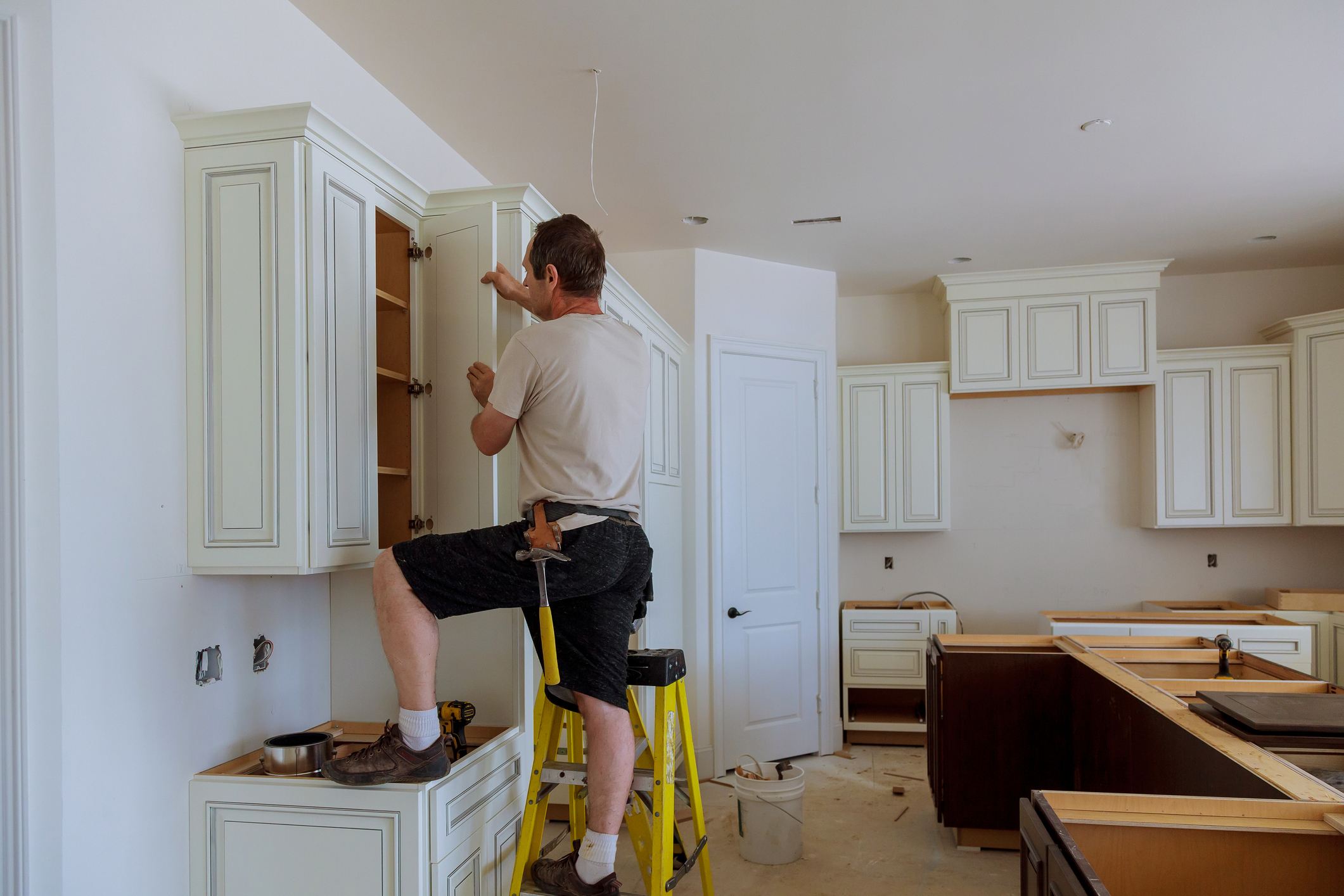
Cabinets are an essential component of any kitchen, providing storage and giving the room a unified appearance. The design and installation of a cabinet set can make or break a space, and unfortunately, there are many possible mistakes that can be made throughout the cabinet making process. If you’re interested in a career in cabinetry, you’ll be building and installing cabinets for your clients’ homes.
Here are the top mistakes that cabinetry professionals make, and how to avoid them.
1. Those with Cabinet Making Training Should Remember to Plan for Function
When cabinets are correctly placed, it’s easy not to notice how much space they take up, or how frequently they’re being opened and closed. However, if the design and layout of a set of cabinets makes it inconvenient to move and operate within a space or access items stored within them, this is a sign that the cabinets are not placed correctly.
In order to avoid a poorly designed cabinet layout, those in cabinet making school should remember to plan ahead and account for the intended function of a space. Cabinets should store clutter rather than create it, and in order to maximize their potential, it’s important to place cabinets in areas where they will be useful. For example, a storage cabinet next to the oven should be big enough for pots and pans, and a spice drawer should be nearer to the stove than the fridge. Planning a cabinet layout in advance will ensure that cabinets are being used properly and saving space instead of creating problems.

2. Don’t Forget About Alignment!
Even the nicest set of cabinets can’t distract a viewer from an alignment issue. When installing cabinets in a home, it’s not uncommon for cabinet makers to forget to correctly level the cabinets. Leveling cabinets is especially important in older homes, where the floors and walls tend to be uneven. Installing cabinets on uneven surfaces can make them appear unbalanced, and it’s important for cabinet makers to take the measurements necessary to ensure precise alignment beforehand. By taking measurements, cabinet makers will know where cabinets need to be leveled in order to create a finished, uniform look.
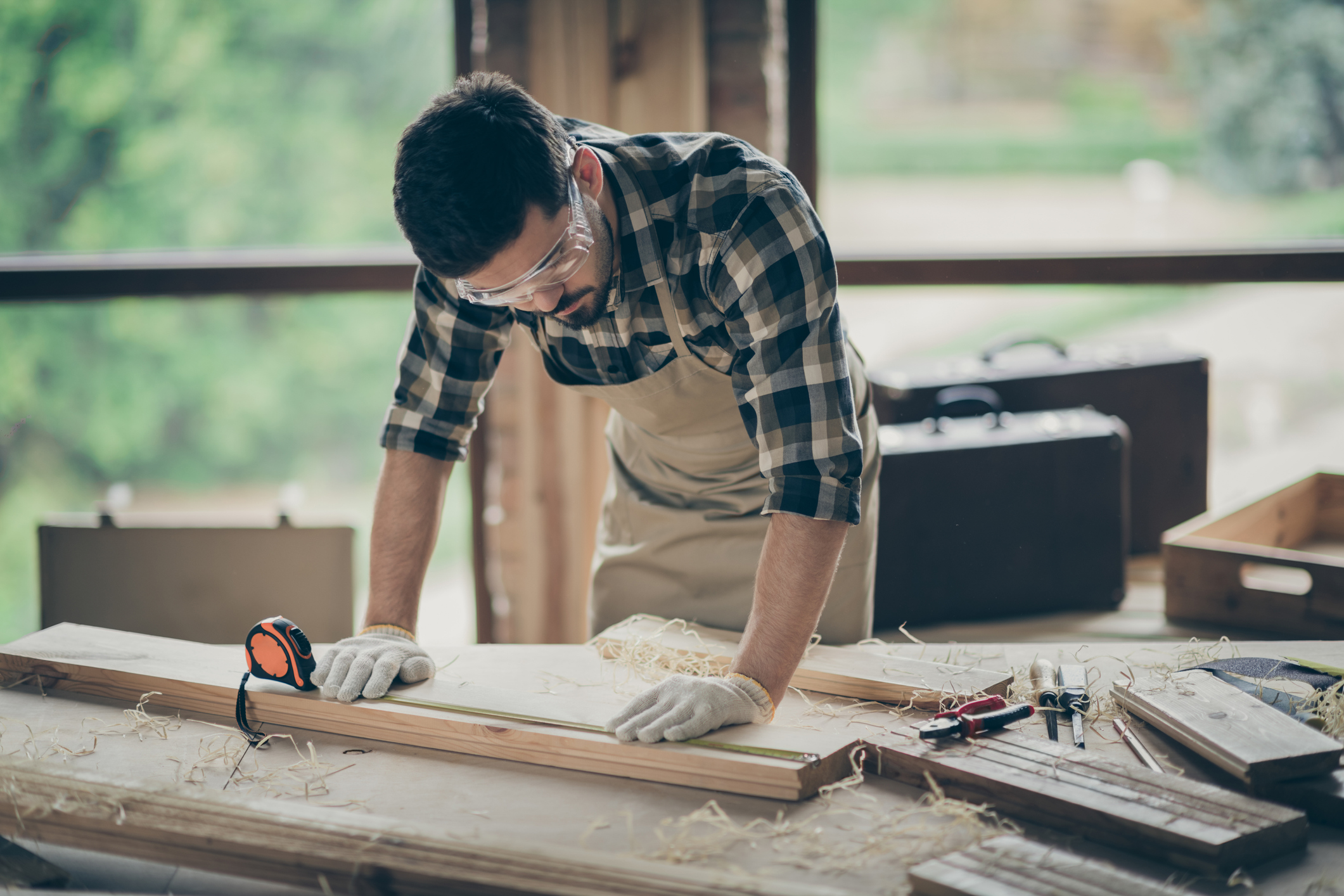
3. Failing to Account for Appliances
Cabinets take up a good deal of space, and if they are not correctly installed, they may interfere with the appliances they are built around. A set of cabinets should integrate seamlessly with the appliances in their vicinity, but one of the most common mistakes that cabinetry professionals can make is failing to account for the size of these appliances when performing an installation. Not measuring the appliances correctly can result in the inability to fit cabinets into their intended space, or the doors of appliances and cabinets clashing when open.
Before installation, professionals with cabinet making training will want to take stock of the appliances within a space, ensuring that the cabinets will be able to fit around them. In order to create a more cohesive look, cabinets should be similar in depth to larger appliances like refrigerators and ovens. Depending on the client, cabinetry professionals may also want to measure smaller appliances such as microwaves or stand mixers, so that cabinets are able to store these properly.
4. Applying the Wrong Paint
For those pursuing a career in cabinet making, another mistake to avoid involves applying the wrong kind of paint to the cabinetry set. Whether they’re located in the washroom or the kitchen, cabinets are used frequently. Thus, it’s important that the appropriate paint is used to prolong the longevity of the cabinets and allow for easy cleaning. Cabinet making professionals should avoid using water based paint. These paints are not stain resistant, making them a poor choice for functional cabinets. Instead, opt for an oil based paint, which is stain resistant and requires less maintenance.
Are you ready to enroll in cabinet making courses?
NATS has got the program for you. Launch your career today!
A Peek at the Outdoor Kitchen for Those Interested in Cabinetmaking Training
January 26, 2021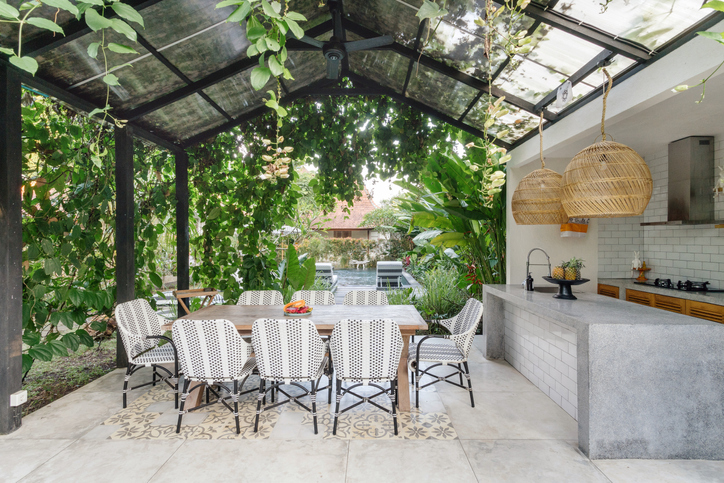
When the COVID-19 pandemic caused most of Canada to go into lockdown last year, many families found that they were cooking at home a lot more than usual. With the option of going out to eat at restaurants off the table for the better part of the past year, people were forced to spend a lot more time in their kitchens. It’s a change that has gotten plenty of families to reconsider the space in which they’re cooking. For plenty of folks at home, the pandemic was an opportunity to invest in some new cookbooks or updated kitchen appliances, while others decided it was time for a new kitchen altogether.
In May of 2020, Google searches for outdoor kitchens almost doubled, as did the search for grills, pizza ovens, and other outdoor cooking necessities. Outdoor kitchens can take many shapes and forms, but the idea is rising in popularity, and it looks like the trend is here to stay. If you’re considering a career in cabinetmaking, now is a great opportunity to learn more about outdoor kitchens and their design.
Those With Cabinet Making Training Should Know What Defines an Outdoor Kitchen
An outdoor kitchen is a functional outdoor space that can serve as a second kitchen in certain homes. While some might call their pizza oven and grill an outdoor kitchen, today, the term can be used to describe a whole range of designs, from simple to luxurious. What an outdoor kitchen looks like might depend on the preferences of the owner. Owners might opt for an island, a grill, an outdoor oven (such as a pizza oven or a wood brick oven), a stovetop, a sink, or even an outdoor bar. Regardless of its design or level of extravagance, there are a few things that should always be taken into consideration when designing an outdoor kitchen. If you have cabinet making training, here’s what you need to know.
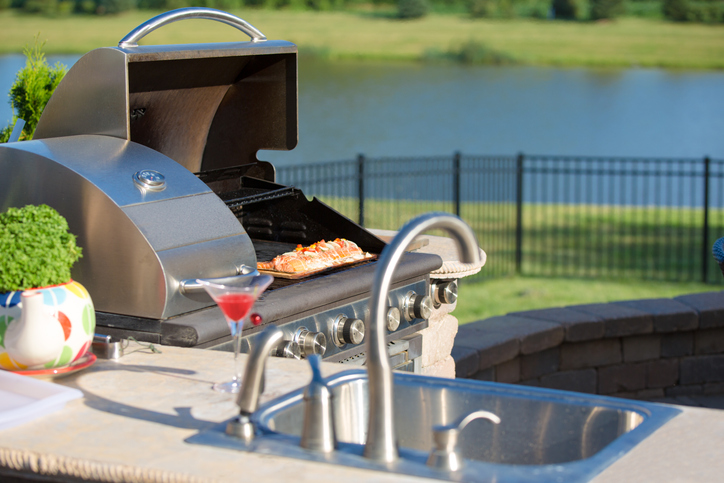
Exposure to the Elements
In any outdoor space, an important consideration is how the weather or climate will affect the appliances and materials used. When choosing the right materials for the cabinets and paneling of an outdoor kitchen, consider how the cabinet will fare with exposure to moisture, sunlight, or cold weather. Some good options for durable materials include stainless steel, teak, and marine grade polymer. All of these materials are relatively weather-proof and easy to maintain, making them great options for an outdoor space.
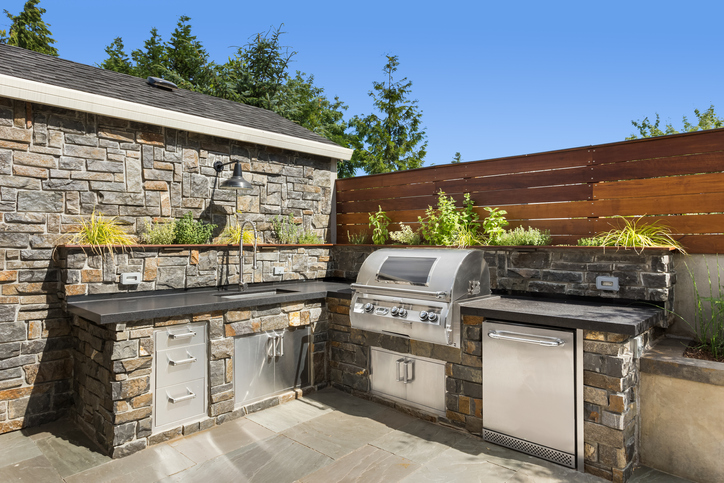
Functionality
An outdoor kitchen doesn’t have to be huge, as long as it contains all the necessary elements. In a functional outdoor kitchen, cabinets should be designed in order to accommodate a range of storage needs. Outdoor kitchens may need more storage, as it’s less likely that owners will be inclined to leave kitchen appliances and utensils resting on countertops in an outdoor space. After completing your cabinet making program, take storage into consideration when configuring the cabinets in an outdoor kitchen. The more storage space that’s available, the less crowded an outdoor kitchen will look.
A Consistent Aesthetic
As with an indoor kitchen, an outdoor kitchen should be consistent in the style and materials used. The use of matching materials and textures makes the space more visually pleasing. Pairing metallic cabinetry with stonework gives the kitchen a more rustic character, while concrete paired with teak cabinetry gives an outdoor kitchen a modern edge. Whatever materials are chosen, it’s important that they work together in order to make the outdoor kitchen both appealing and useful.
Are you ready to enroll in cabinet making courses?
Check out the North American Trade School’s program options to get started today.
A Look at the Hottest Cabinet Trends in 2020 for Students of Cabinet Making Courses
November 03, 2020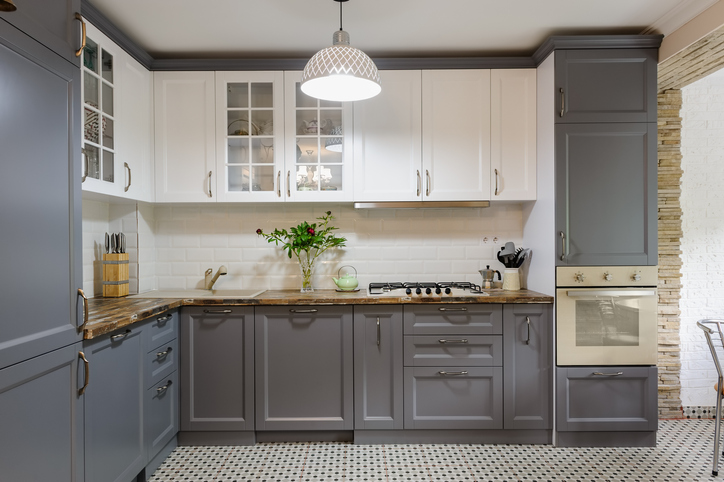 If you’re wondering what will make for the most modern-looking cabinet in someone’s kitchen right now, look no further. When you’re in the middle of a home renovation project and you’re fixing up someone’s kitchen, you won’t want any of it looking dated compared to the rest of the room—and that includes the look of the cabinets. Whether they need a new paint job, or a full redesign or replacement, there are many techniques you can use to give them a fresh, modern look.
If you’re wondering what will make for the most modern-looking cabinet in someone’s kitchen right now, look no further. When you’re in the middle of a home renovation project and you’re fixing up someone’s kitchen, you won’t want any of it looking dated compared to the rest of the room—and that includes the look of the cabinets. Whether they need a new paint job, or a full redesign or replacement, there are many techniques you can use to give them a fresh, modern look.
For any kitchen cabinets looking like they’re stuck in 1974, you can borrow from any of these current trends to give them the facelift they need. Here are some of 2020’s hottest trends in cabinet making.
Transitional Cabinets: Where Old School Cabinet Designs Meet the New
One major trend for cabinets nowadays is when older styles are mixed with current ones, such as when kitchens that were built decades ago are given a fresh update with modern-looking cabinets or other pieces. You can do this by using modern-day tiling and cabinet design while the rest of the kitchen pulls from design techniques of years past. If a client needing renovations for their kitchen wants to spruce it up and make it look more contemporary, while also not wanting to sacrifice too much of the traditional feel that made it look comforting in the first place, transitional cabinets are one way to accomplish this. This is an example of a trend that can be used for a variety of kitchen styles, and one that can apply well beyond 2020.
Open Shelving: How Students in Cabinet Making Training Can Make Kitchens Look Bigger
Students in a trade school learning about cabinet making may notice that some modern kitchens don’t even bother with cabinets that need to be opened and closed. Instead, some opt for shelves that put cabinet items on display for everyone in the room to see! To use open shelving in lieu of traditional cabinets is a great way to modernize the look of a kitchen, and make it more functional as far as using kitchen items without needing to open cabinet doors.

It also allows for the homeowner to save more space in their kitchen, or make the kitchen appear more expansive, particularly if it’s smaller in size. It’s a decidedly more minimalist approach to the use of cabinets, but it’s a good way for homeowners to make their most prized kitchen possessions the star of the show.
Integration: Hiding Range Hoods and Appliances for a Better-Looking Kitchen
One thing that students in cabinet making training might notice about modern cabinet designs is that some present-day kitchens are looking increasingly streamlined. Components that were once ostentatiously exposed are now integrated within the kitchen, or seemingly hidden altogether. This is especially true for dishwashers, range hoods, ovens, and refrigerators.
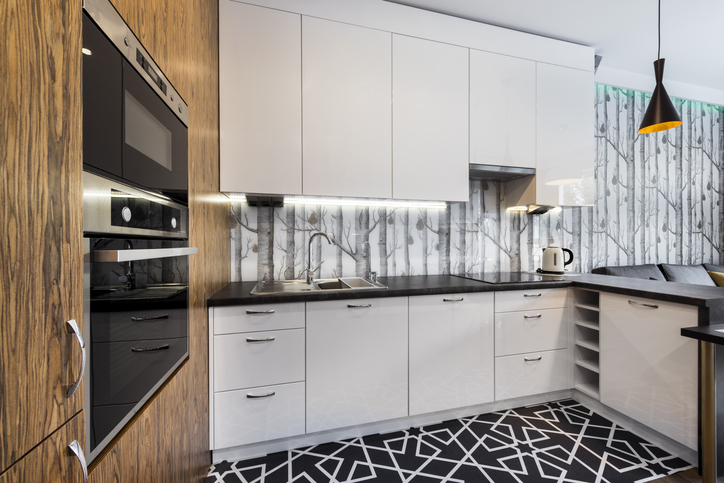
These components would be fitted alongside custom panels to appear integrated with the cabinets surrounding them, and give off a sleek, uninterrupted appearance. The cabinets and kitchen would look more cohesive, and this style would also make parts that would otherwise stick out within the kitchen appear as if they were part of the wall to begin with.
Do you want to take cabinet making courses?
Contact North American Trade Schools for more information!





